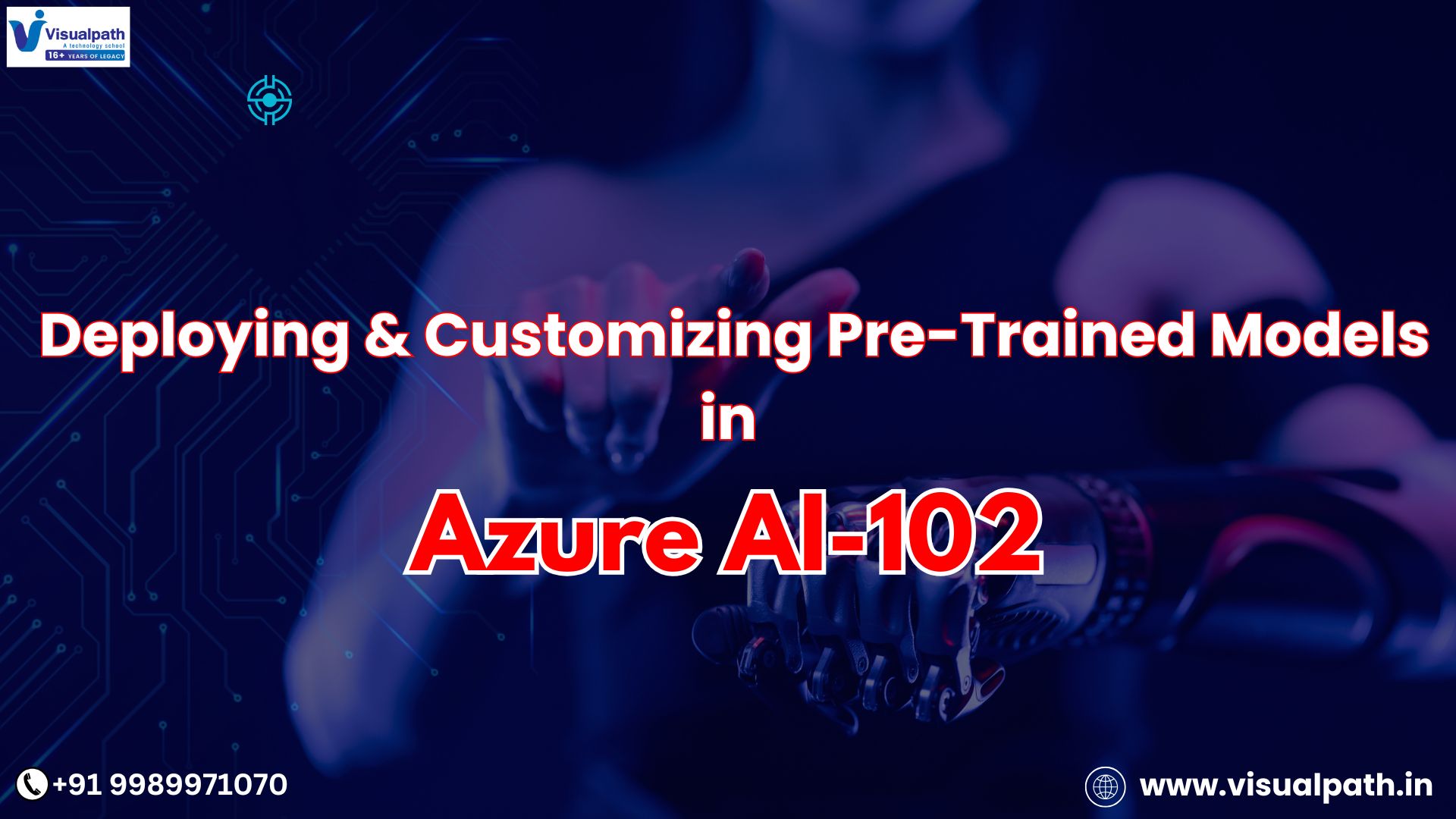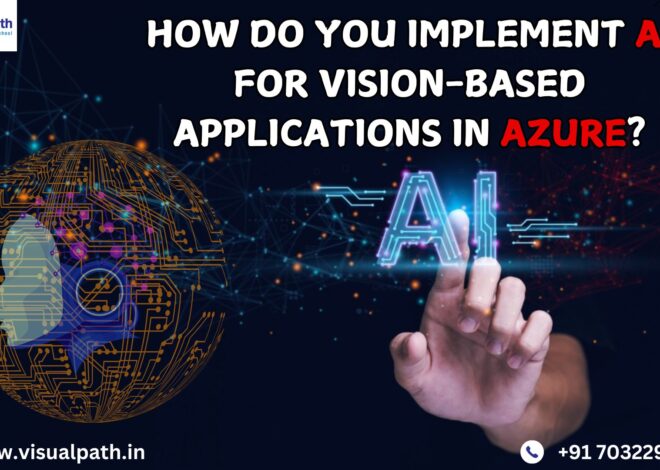Introduction:
AI-102 Certification and looking to deepen your knowledge in deploying pre-trained models and customizing them through Azure AI services, you’re in the right place. Azure AI Engineer Training is crucial for building and maintaining AI solutions on the Microsoft Azure platform. In this article, we will walk you through how to leverage pre-trained models, customize them, and deploy them within Azure AI services effectively. These capabilities play a vital role in creating powerful machine learning solutions, making it easier to implement AI functionality without starting from scratch.
What Are Pre-Trained Models in Azure AI?
Pre-trained models are machine learning models that have already been trained on large datasets and are optimized for specific tasks. These models are designed to handle tasks such as image recognition, natural language processing, and speech recognition. By leveraging pre-trained models, developers can save a significant amount of time, as they don’t need to train models from scratch. These models come ready to use within Azure AI services like Azure Cognitive Services, which offer various APIs to integrate pre-trained capabilities into your applications.
Azure’s pre-trained models include services like:
- Computer Vision: For image classification, object detection, and text extraction.
- Speech: For speech recognition, speech translation, and speaker identification.
- Language: For text analytics, sentiment analysis, language understanding (LUIS), and translation.
- Custom Vision: A specialized service that allows users to train custom image classification models with minimal effort.
Why Use Pre-Trained Models in Azure AI?
The main advantage of using pre-trained models in Azure is their ability to expedite the AI development process. These models have already been trained on vast amounts of data, making them highly accurate and effective. They can help solve a wide range of problems across different industries, such as healthcare, finance, retail, and more. Azure AI Engineer Training equips professionals with the knowledge to effectively use these services to integrate pre-trained models into their applications.
Additionally, pre-trained models allow organizations to access state-of-the-art AI technology without the need for deep expertise in machine learning. With these models, developers can easily implement AI capabilities into their projects with just a few lines of code. As part of your AI-102 Microsoft Azure AI Training, you’ll learn how to deploy and customize these models, ensuring that they meet your unique requirements.
Deploying Pre-Trained Models from Azure AI Services
When it comes to deploying pre-trained models, Azure provides several options. Azure AI Engineer Training covers these methods in detail, teaching you how to deploy models in both cloud and edge environments. Here’s how you can deploy pre-trained models in Azure:
Step 1: Choose the Right Pre-Trained Model
The first step in deploying a pre-trained model is selecting the one that fits your requirements. Azure Cognitive Services offers a variety of pre-built models tailored to specific tasks, such as vision, language, and speech. For instance, if you’re building an application that needs to analyze customer feedback, the Text Analytics API might be a good fit. If your project requires image analysis, Computer Vision or Custom Vision would be ideal choices.
Step 2: Set Up Azure Resources
Once you’ve selected a model, the next step is to set up the necessary Azure resources, such as an Azure subscription, resource group, and the specific AI service. Depending on the service you’re using, you’ll need to create resources like Cognitive Services accounts, machine learning workspaces, or Azure Kubernetes Service (AKS) clusters for deploying models at scale.
Step 3: Integrate the Pre-Trained Model
With the Azure resources set up, you can now integrate the pre-trained model into your application. Azure provides SDKs for multiple programming languages, including Python, C#, and Java, to help you connect to Azure’s AI services easily. After integration, the model is ready to process input and generate predictions. For example, if you’re using the Speech-to-Text API, the model can transcribe audio data into text.
Step 4: Monitor and Optimize the Deployment
Once deployed, it’s important to monitor the model’s performance in real time. Azure offers built-in monitoring tools like Azure Monitor to track key metrics such as response times, usage, and accuracy. Regular optimization ensures the model continues to deliver accurate results as your application scales.
Customizing Pre-Trained Models from Azure AI Services
While pre-trained models are powerful out of the box, there may be cases where you need to fine-tune them to better suit your specific use case. Azure AI services allow you to customize pre-trained models, making them adaptable to your needs. Customizing these models involves providing additional data to retrain them or modify their behaviour.
Customizing a Model in Azure
- Collect Your Dataset: Gather a dataset that represents the unique scenarios of your application. For instance, if you’re building a chatbot, you’ll need to gather examples of the phrases or questions users will ask.
- Train the Model: Using Azure’s training tools, upload your data to the platform and begin training. This process involves adapting the model to learn patterns specific to your dataset.
- Evaluate and Test: After training, evaluate the model to ensure its accurate and reliable. Azure provides testing tools that allow you to test your model’s predictions against known data.
- Deploy the Custom Model: Once you’re satisfied with the custom model’s performance, you can deploy it just like a pre-trained model.
Use Cases for Customizing Pre-Trained Models
- Image Recognition: Fine-tuning pre-trained models to identify specific objects, such as brand logos or medical conditions.
- Chatbots and Virtual Assistants: Customizing NLP models to better understand domain-specific jargon and user queries.
- Sentiment Analysis: Adjusting language models to analyze customer feedback with a focus on industry-specific sentiments.
Conclusion
In conclusion, mastering how to deploy and customize pre-trained models is an essential skill for professionals aiming to earn the AI-102 Certification and pursue a career in Azure AI engineering. By using Azure AI Engineer Training and the tools provided by Microsoft Azure, you can effectively integrate pre-trained models into your applications, customize them for specific needs, and deploy them at scale. These skills will help you build efficient AI solutions that improve business processes, enhance user experiences, and provide valuable insights. As you progress in your AI-102 Microsoft Azure AI Training, you’ll be better equipped to tackle real-world AI challenges and become an expert in Azure AI services.
Visualpath is the Best Software Online Training Institute in Hyderabad. Avail complete Azure AI (AI-102) worldwide. You will get the best course at an affordable cost.
Attend Free Demo
Call on – +91-9989971070
WhatsApp: https://www.whatsapp.com/catalog/919989971070/
Visit:https://www.visualpath.in/online-ai-102-certification.html




